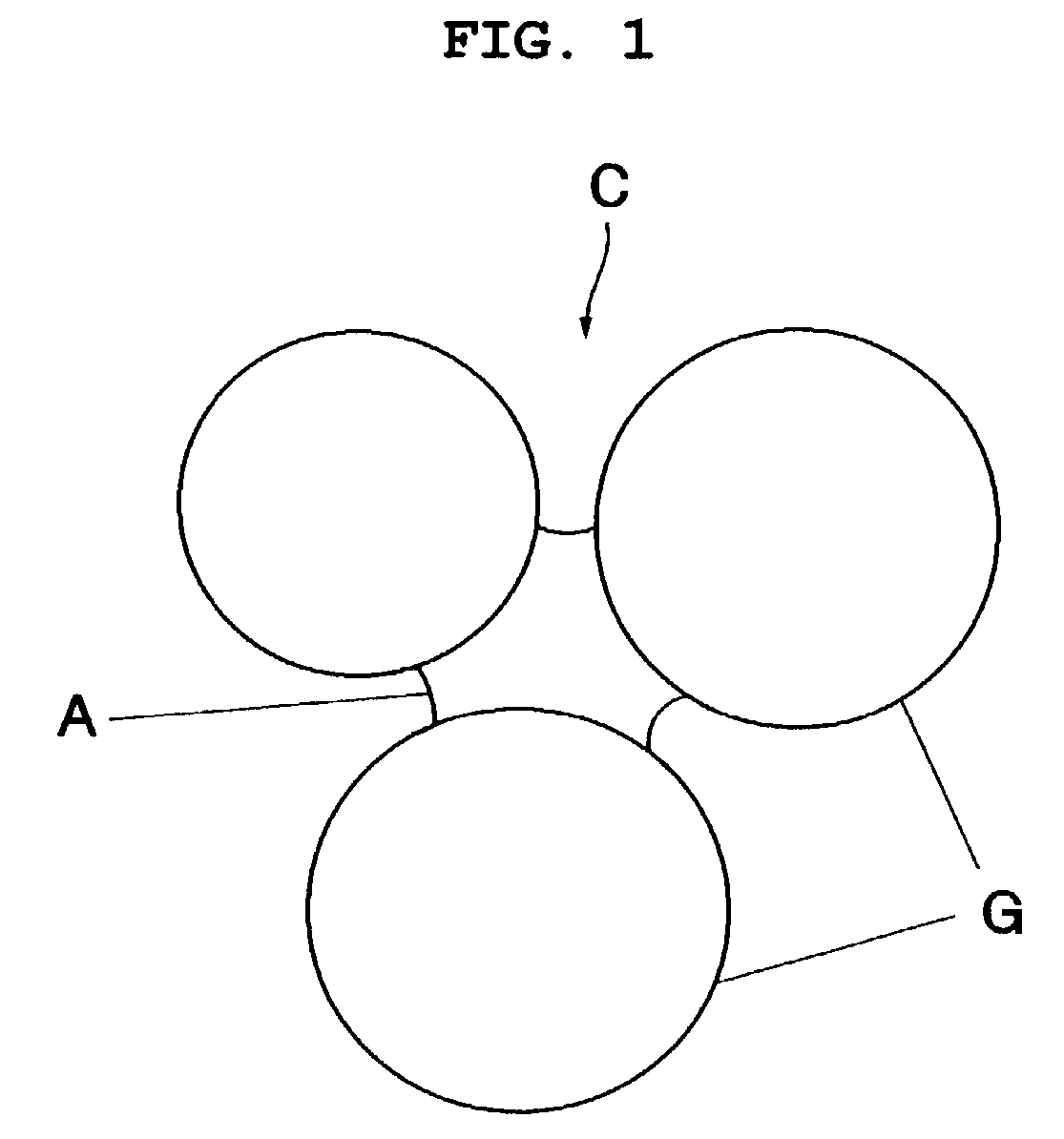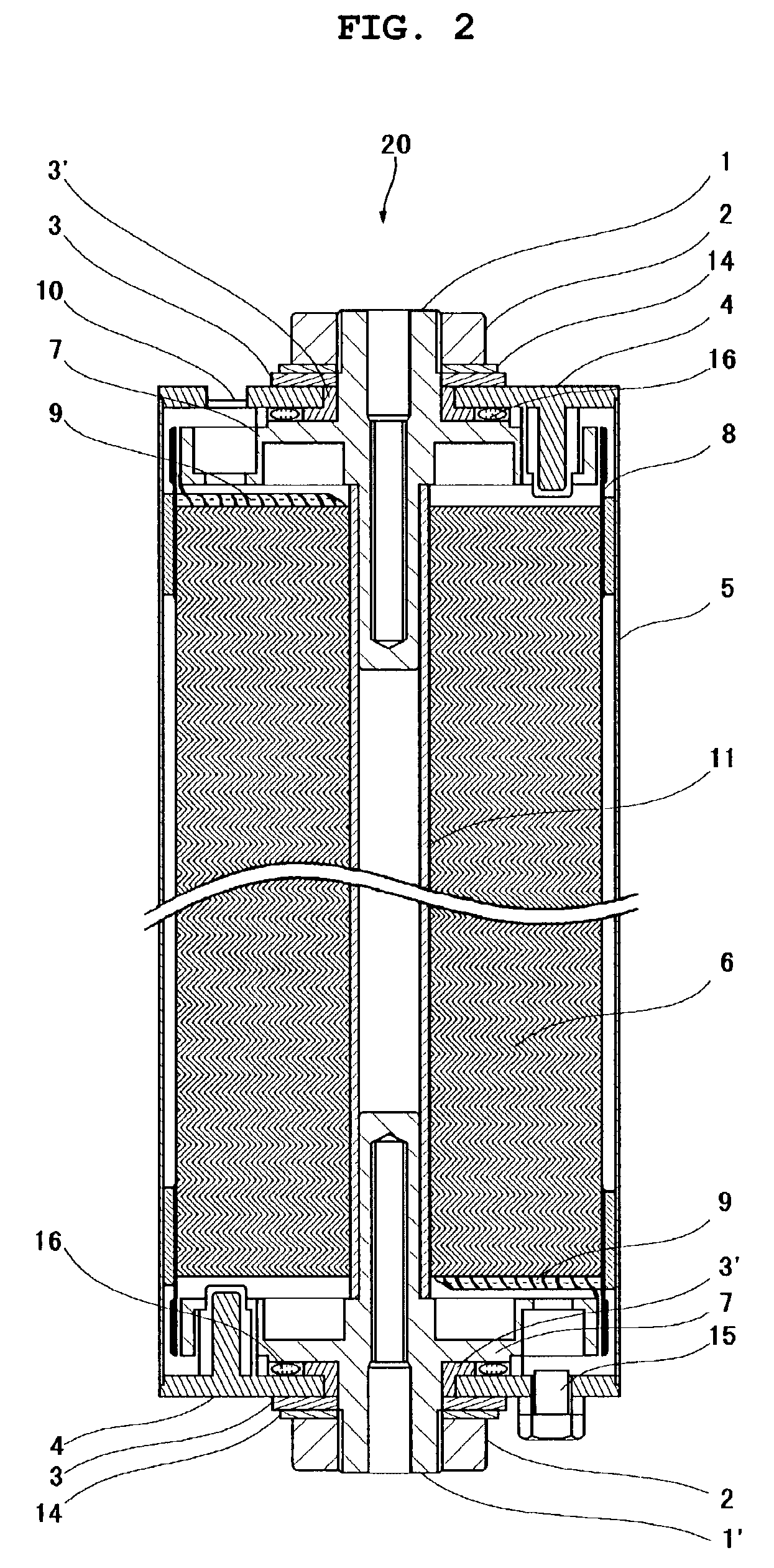Non-aqueous electrolytic solution secondary battery
a secondary battery, non-aqueous electrolytic technology, applied in non-aqueous electrolyte accumulator electrodes, sustainable manufacturing/processing, climate sustainability, etc., can solve the problem that the small power battery is practically unsuitable for electric vehicles
- Summary
- Abstract
- Description
- Claims
- Application Information
AI Technical Summary
Benefits of technology
Problems solved by technology
Method used
Image
Examples
example 1
[0038] As shown in the following Table 1, in Example 1, carbon binding particles having the average particle diameter of 36 .mu.m manufactured by using mesophase type spherical graphite (manufactured by Kawasaki Steel, Trade name: KMFC) having the average particle diameter of 8 .mu.m as the negative electrode carbon material were used. At this time, the ratio of amorphous carbon phase was 16%.
1 TABLE 1 BINDING PARTICLES RATIO OF PARTICLE GRAPHITE AMORPHOUS DIAMETER PARTICLE CARBON PHASE (.mu.m) KIND DIAMETER (.mu.m) (%) EXAMPLE 1 36 KMFC 8 16 EXAMPLE 2 33 KMFC 8 4 EXAMPLE 3 40 KMFC 8 24 EXAMPLE 4 33 KMFC 8 3 EXAMPLE 5 40 KMFC 8 26 EXAMPLE 6 42 KMFC 8 20 EXAMPLE 7 14 KMFC 5 20 EXAMPLE 8 12 KMFC 5 20 EXAMPLE 9 36 SCALE-SHAPED GRAPHITE 8 16 EXAMPLE 10 33 SCALE-SHAPED GRAPHITE 8 4 EXAMPLE 11 40 SCALE-SHAPED GRAPHITE 8 24 EXAMPLE 12 33 SCALE-SHAPED GRAPHITE 8 3 EXAMPLE 13 40 SCALE-SHAPED GRAPHITE 8 26 EXAMPLE 14 42 SCALE-SHAPED GRAPHITE 8 20 EXAMPLE 15 14 SCALE-SHAPED GRAPHITE 5 20 EXAMP...
example 2
[0039] As shown in Table 1, in Example 2, a battery was manufactured in the same manner as the Example 1 except that the carbon binding particles having the average particle diameter of 33 .mu.m manufactured by using KMFC having the average particle diameter of 8 .mu.m were used. At this time, the ratio of amorphous carbon phase was 4%.
example 3
[0040] As shown in Table 1, in Example 3, a battery was manufactured in the same manner as the Example 1 except that the carbon binding particles having the average particle diameter of 40 .mu.m manufactured by using KMFC having the average particle diameter of 8 .mu.m were used. At this time, the ratio of amorphous carbon phase was 24%.
PUM
| Property | Measurement | Unit |
|---|---|---|
| particle diameter | aaaaa | aaaaa |
| particle diameter | aaaaa | aaaaa |
| height | aaaaa | aaaaa |
Abstract
Description
Claims
Application Information
 Login to View More
Login to View More - R&D
- Intellectual Property
- Life Sciences
- Materials
- Tech Scout
- Unparalleled Data Quality
- Higher Quality Content
- 60% Fewer Hallucinations
Browse by: Latest US Patents, China's latest patents, Technical Efficacy Thesaurus, Application Domain, Technology Topic, Popular Technical Reports.
© 2025 PatSnap. All rights reserved.Legal|Privacy policy|Modern Slavery Act Transparency Statement|Sitemap|About US| Contact US: help@patsnap.com



